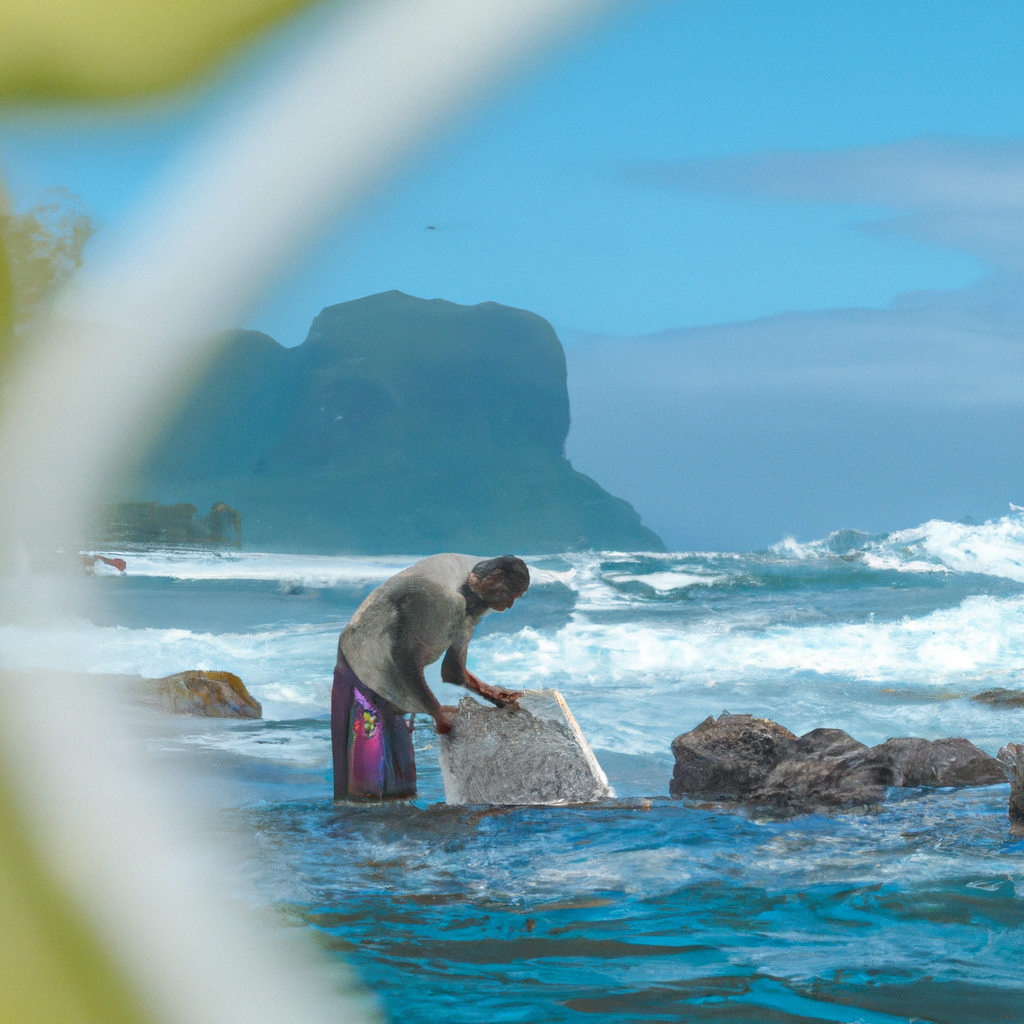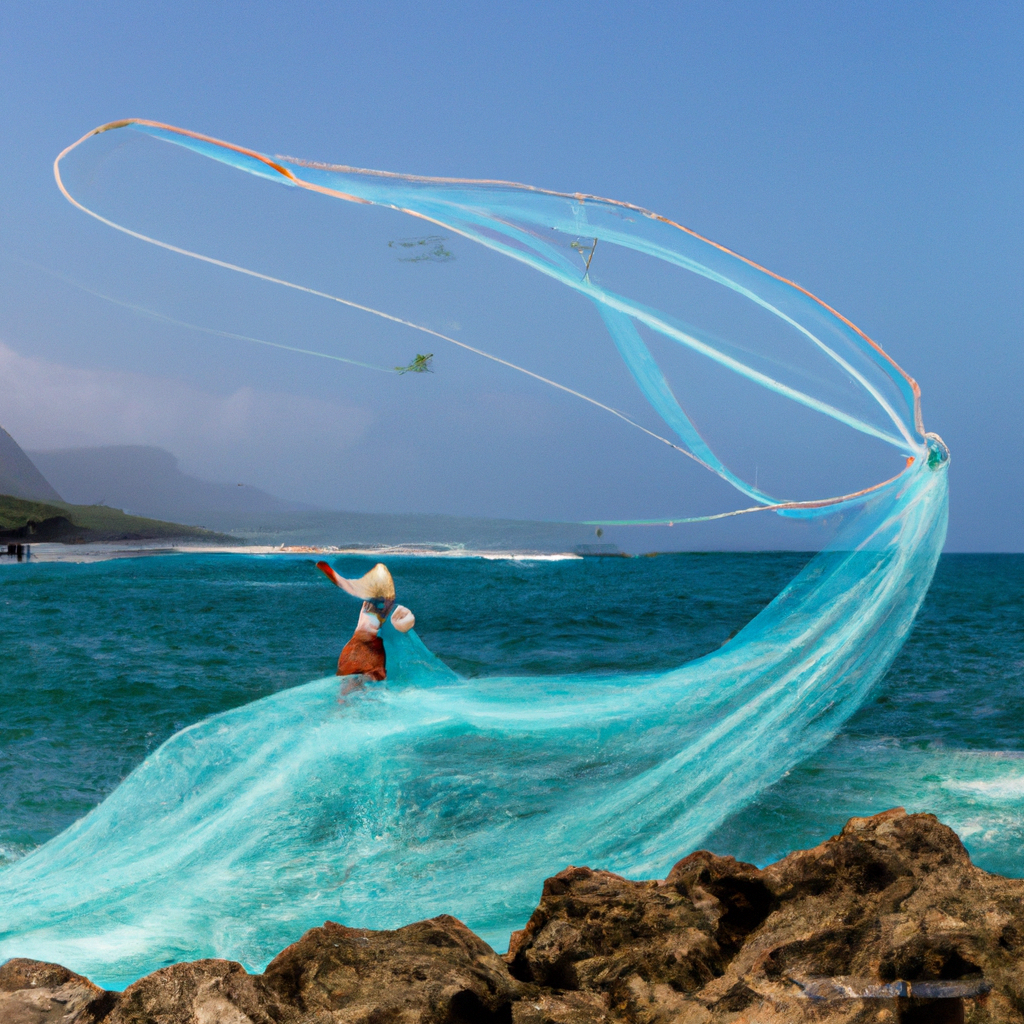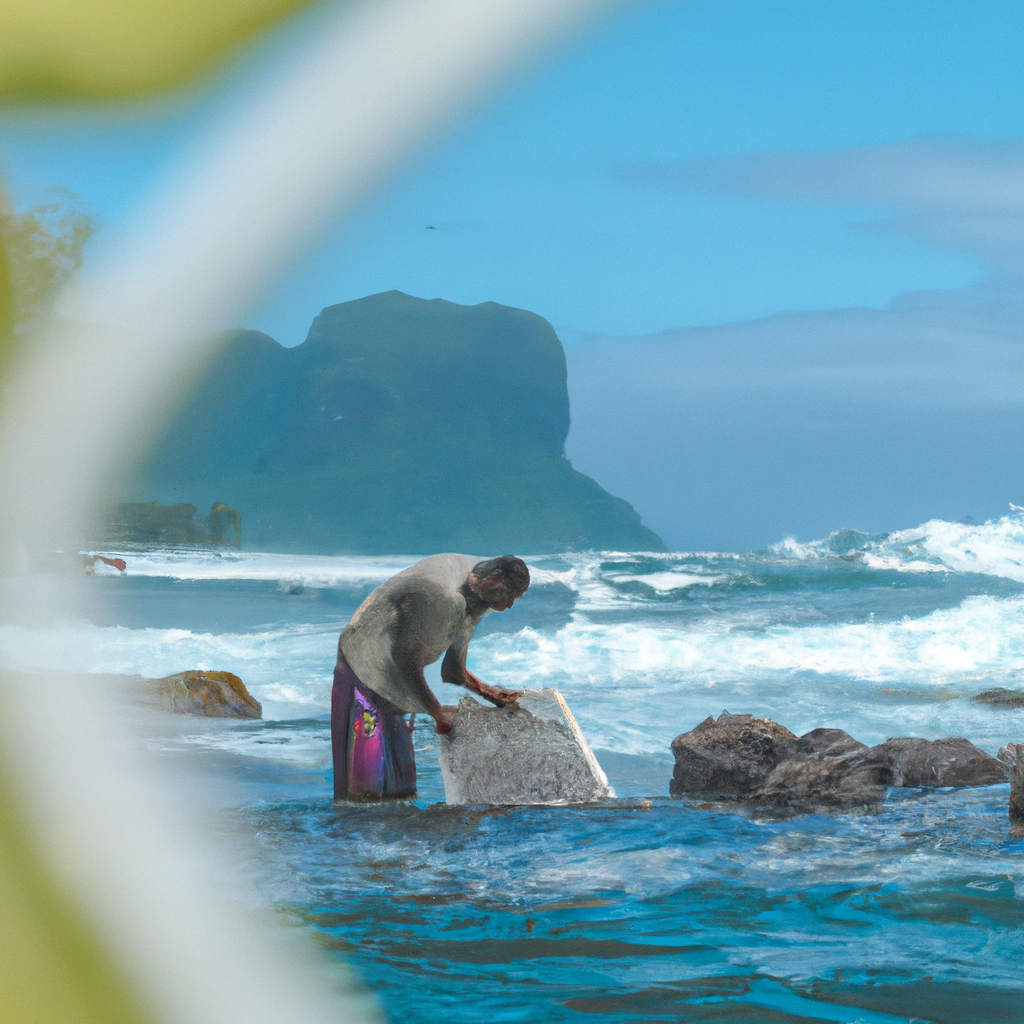Are you interested in discovering the rich cultural heritage of Hawaii? In this article, you will have the opportunity to explore the traditional fishing techniques used by the native Hawaiians. From net fishing to spearfishing, these age-old practices not only ensured the survival of the island communities but also held significant cultural and spiritual importance. Join us as we delve into the fascinating world of traditional Hawaiian fishing techniques and gain a deeper understanding of their connection to the sea and the land. Get ready for an immersive journey into the vibrant history of the Hawaiian islands!

H2: Fishing in Hawaiian Culture
Fishing holds a significant place in Hawaiian culture, with deep-rooted traditions and practices that have been passed down through generations. It not only provides sustenance and livelihood for the community but also serves as a way to connect with nature and honor the ancestral ties. Let’s delve into the cultural significance and explore the traditional fishing techniques employed by the Hawaiian people.
H3: A cultural significance
Fishing in Hawaii is more than just a means of survival; it is a way of life deeply intertwined with the culture and spirituality of the islands. The ocean is regarded as a sacred entity and the source of life, providing not only food but also spiritual sustenance. The act of fishing is seen as a form of collaboration with the gods and the ancestors, with rituals and ceremonies performed to show respect and seek their blessings. It is a way for the Hawaiian people to maintain a spiritual connection with their past and pass down their cultural heritage to future generations.
H3: Traditional fishing practices
Traditional fishing methods have been honed and perfected over centuries, ensuring sustainable and efficient use of marine resources. These techniques not only reflect the ingenuity and resourcefulness of the Hawaiian people but also highlight their deep knowledge and understanding of the ocean ecosystem.
H2: Fishing Techniques
The art of fishing in Hawaii encompasses a range of techniques, each tailored for specific environments and fish species. Let’s explore some of the commonly employed traditional fishing techniques:
H3: Shoreline Fishing
Shoreline fishing, also known as ‘pole fishing,’ involves casting lines or using fishing rods from the shore. This technique is suitable for catching reef fish and is practiced in areas where the shoreline offers access to productive fishing grounds. It requires a keen sense of fish behavior, as well as an understanding of the timing and tidal movements to maximize catches.
H3: Throw Net Fishing
Throw net fishing, or ‘net casting,’ is a traditional method still widely used in Hawaii to catch fish in shallow waters. This technique involves throwing a circular net, known as a ‘throw net,’ over a school of fish while wading in the water. Skilled fishermen can expertly cast the net to encircle the fish, trapping them within. This method is not only efficient but also allows for selective fishing, ensuring that only the desired species are caught.
H3: Spearfishing
Spearfishing is another ancient fishing technique that is deeply ingrained in Hawaiian culture. This method involves hunting fish using a handheld spear or Hawaiian spear gun, known as a ‘Hawaiian sling.’ Skilled spearfishers rely on their knowledge of fish behavior and habitats to stalk their prey underwater and strike with precision. This technique requires exceptional breath-holding skills and is often accompanied by prayers and rituals to honor the fish and ensure a successful catch.
H3: Handlining
Handlining is a technique that involves using a fishing line with baited hooks to catch fish. In Hawaii, it is commonly practiced from boats or canoes. Fishermen carefully navigate the waters, dropping the baited hook to different depths to attract a variety of fish species. Handlining requires skillful handling of the line and a keen understanding of fishing grounds to maximize the chances of a successful catch.
H3: Traps and Weirs
Traps and weirs are collective terms for various fishing structures designed to passively catch fish as they migrate or move along the shoreline. Traditional Hawaiian traps and weirs, such as ‘kaheka’ and ‘weke,’ were made using rocks, coral, and other natural materials. These structures were strategically placed in areas where fish congregated, effectively funneling them into an enclosed space from which escape was difficult. This technique allowed for a sustainable and controlled harvest of fish.
H2: Tools and Equipment
To successfully execute these traditional fishing techniques, Hawaiian fishermen have developed specialized tools and equipment. Let’s take a look at some of the essential fishing gear used in Hawaii:
H3: Throw Net
The throw net, or ‘kaulau,’ is a circular net made of fine mesh that is thrown by hand to capture fish. It is skillfully woven, with lead weights placed along its perimeter to ensure that the net sinks quickly when thrown into the water. The size of the throw net varies depending on the target fish species and fishing conditions.
H3: Fishing Spears
Fishing spears, or ‘ihe,’ are handheld tools used in spearfishing. These traditional spears are made from wood or bone, with multiple shark tooth or bone barbs attached to one end. Skilled spearfishers can swiftly and accurately strike the fish from a close distance, making it an effective method of catching fish in the waters around Hawaii.
H3: Handline
The handline is a simple but versatile tool used for handlining. It consists of a length of fishing line wound around a wooden or plastic spool. At the end of the line, baited hooks are attached, and the line is dropped into the water to lure fish. The handline is lightweight and portable, making it ideal for fishing from boats or canoes.
H3: Trap and Weir Structures
Traditional trap and weir structures are built using a combination of rocks, coral, and other natural materials found in the coastal areas of Hawaii. These structures are carefully constructed to create channels or enclosures, allowing fish to enter but making it challenging for them to escape. The design and placement of these traps and weirs vary depending on the fishing grounds and the targeted fish species.
H2: Traditional Knowledge and Practices
To be successful in traditional Hawaiian fishing, fishermen must possess a deep understanding of the environment, seasonal patterns, and fish behavior. Let’s explore the traditional knowledge and practices that play a crucial role in sustainable fishing:
H3: Environmental Observations
Hawaiian fishermen rely on keen observations of the environment, including the ocean currents, wind patterns, and changes in the marine ecosystem. By understanding these natural indicators, fishermen can predict the movement and migration patterns of fish, increasing their chances of successful catches.
H3: Seasonal Patterns
Seasonal patterns have a significant influence on fish behavior and availability. Hawaiian fishermen have developed a profound knowledge of these patterns, observing the changes in water temperature, currents, and food sources. This information helps them determine the best fishing grounds and times to maximize their catches and minimize the impact on fish populations.
H3: Knowledge of Fish Behavior
Traditional Hawaiian fishing techniques are rooted in the intimate knowledge of fish behavior and habitats. Fishermen have honed their understanding of the feeding habits, breeding patterns, and migration routes of various fish species. This knowledge enables them to effectively target certain species while avoiding overfishing and protecting vulnerable populations.

H2: Sustainability and Conservation
Sustainability and conservation are vital aspects of traditional Hawaiian fishing practices. The Hawaiians recognize the delicate balance between human needs and the preservation of the marine ecosystem. Let’s explore the importance of conservation in Hawaiian fishing and the practices employed to ensure the sustainability of marine resources:
H3: The importance of conservation
Conservation is at the heart of traditional Hawaiian fishing practices. The Hawaiians believe in the principle of “kuleana,” which emphasizes the responsibility to care for and preserve natural resources. They understand that overfishing or damaging the ecosystem will disrupt the delicate balance and threaten future generations’ ability to sustain themselves.
H3: Traditional conservation practices
Traditional Hawaiian fishing includes various conservation practices that have been passed down through generations. These practices aim to limit the impact on fish populations and ensure the renewal of marine resources. Examples include regulations on fishing seasons, size limits, and certain areas designated as no-fishing zones or sanctuaries.
H3: Modern challenges to sustainability
While traditional Hawaiian fishing practices have a strong foundation in sustainability, modern challenges pose threats to the delicate balance. Factors such as climate change, pollution, and overfishing from commercial operations can disrupt fish populations and degrade the marine ecosystem. It is crucial for the Hawaiian community and policymakers to address these challenges and find sustainable solutions to protect their cultural and natural heritage.
H2: Modern Adaptations
With the passage of time and the influence of modernity, some contemporary fishing techniques have emerged alongside traditional practices. These adaptations aim to balance the preservation of cultural heritage with the demands of the present. Let’s explore some of the modern fishing techniques employed in Hawaii:
H3: Contemporary fishing techniques
Contemporary fishing techniques in Hawaii often combine elements of traditional practices with modern tools and technologies. These techniques include deep-sea fishing using motorized boats, fishing with modern fishing lines and reels, and using electronic devices to locate fish schools or predict their movements. While these methods are more efficient, efforts are made to ensure they are carried out sustainably and in harmony with traditional practices.
H3: Balancing tradition and modernity
Hawaiians strive to strike a delicate balance between preserving their cultural traditions and embracing modernity. While they explore contemporary fishing techniques, there is a conscious effort to incorporate traditional knowledge, conservation practices, and respect for the ocean’s spiritual significance. By blending the old with the new, Hawaiians aim to sustainably utilize marine resources while preserving their cultural identity.
H2: Preserving the Traditions
Preserving the rich cultural traditions of Hawaiian fishing is of utmost importance to the local community. Efforts are made to revitalize and transmit this ancestral knowledge to future generations. Let’s explore some of the initiatives undertaken to preserve traditional fishing techniques:
H3: Cultural revitalization efforts
Numerous organizations, cultural centers, and community groups in Hawaii are actively involved in revitalizing and preserving traditional fishing practices. These efforts include educational programs, workshops, and events that teach the younger generation about the significance of traditional fishing and the value of sustainable practices. Cultural revitalization not only ensures the survival of fishing traditions but also helps foster a sense of cultural pride and identity.
H3: Passing down knowledge to future generations
The passing down of traditional knowledge in Hawaiian fishing is usually done through an apprenticeship model, where experienced fishermen mentor the younger generation. This direct transfer of knowledge ensures that the techniques, practices, and cultural values associated with fishing are preserved authentically. By learning from their elders, the younger generation gains a deep appreciation for their heritage and a sense of responsibility towards sustainable fishing practices.
H2: Conclusion
Fishing holds a special place in Hawaiian culture, embodying the spiritual connection between the people, the ocean, and the ancestors. The traditional fishing techniques employed in Hawaii reflect the deep knowledge, skill, and respect that the Hawaiians have for the marine ecosystem. Through careful observation, sustainable practices, and a harmonious blend of tradition and modernity, the Hawaiian people are committed to preserving their cultural heritage while ensuring the long-term sustainability of their marine resources. By understanding and appreciating the cultural significance of fishing in Hawaii, we can contribute to the preservation of this rich and vibrant tradition for generations to come.
